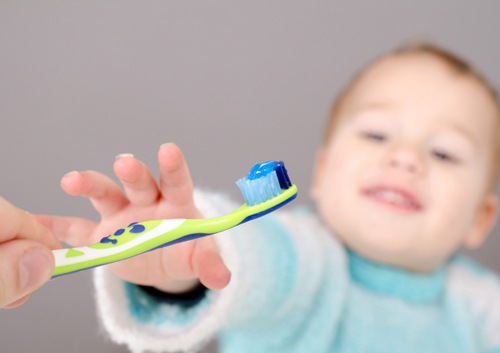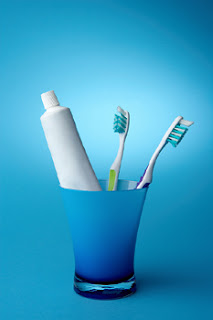
When we were small, a loose tooth wasn’t a reason to be worried. On the contrary! It was a time to celebrate: A permanent tooth on the way. A sign that you were growing up. Perhaps even a lucrative visit from the Tooth Fairy. Losing a baby tooth had quite a few benefits.
Now that we’re grown, no such benefits are in store for us, because a lost adult tooth is gone for good. That’s why any time you notice a loose tooth you need to call Drs. Marc Schwartz, Eli Schwartz, and Kathy Boillot immediately. With prompt dental care, that tooth might be saved.
But first, a word about how our teeth stay firmly rooted in the jaw.
- The visible part (crown) of a tooth is protected by a layer of enamel. The root below is covered with a protective layer called cementum.
- There is a socket for each tooth in the alveolar bone of the jaw, where each root is firmly attached within the socket by the periodontal ligament which surrounds it.
- This ligament is made up of connective tissue, which attaches both to the cementum covering the root and to the alveolar bone. It not only holds the tooth in place, it cushions the tooth from the daily pressure of biting and chewing.
- The gums surround the teeth and bone, protecting them from bacteria.
If the tooth, bone, ligament, or gums suffer damage, the result can be a loose tooth.
Treating a Loose Tooth
The treatment you receive will depend on the reason your tooth is loose. There are many situations which can lead to a loose tooth or teeth, and many treatment options available to you. Some of the common causes and potential treatments include:
If you have suffered a tooth or jaw injury as a result of an accident or trauma, it’s very important to see your dentist or doctor immediately. You should be carefully examined to determine whether there is damage to other teeth or the jaw. Serious tooth or jaw bone injury might require treatment by an oral surgeon.
In some cases of damage to the periodontal ligament or tooth, even if your tooth is loose or extruded (partially out of its socket), it can be stabilized in place so that the ligament and tissue around it has time to heal.
We’ll make sure the root, nerves, and blood vessels are still intact, position the tooth back in its socket, and then anchor it to the adjacent teeth with a flexible splint for several weeks. In the case of an alveolar or a root fracture, a rigid splint may be used.
Splinting gives the periodontal ligament and bone surrounding it time to heal while keeping your injured tooth from further displacement.
Your teeth are designed to withstand a lot of pressure—in fact, in some ways, pressure is essential for healthy teeth and bone. The normal pressure of chewing and biting stimulates bone tissue in the jaw. When a tooth is lost, that stimulation is gone and the result is gradual bone loss in the area underneath the lost tooth.
But sometimes, the pressure exerted by a malocclusion (bad bite) or bruxism (tooth grinding) is too forceful. The connective tissue which holds the teeth in place is damaged by these forces, and loose teeth can be the result.
If you have a serious malocclusion, an orthodontist can provide the relief you need with braces or aligners. If your bite problem is caused by a tooth or teeth which are a bit too high, the enamel can be carefully contoured and reshaped. In some cases, splints, either temporary or permanent, can also be used to stabilize several adjacent teeth so that any biting or chewing force is spread over the section as a whole.
If you grind your teeth, a night guard can be custom fitted to provide relief from the pressures and impact of tooth clenching and grinding. This special kind of mouth guard is known as an occlusal splint.
Osteoporosis causes a loss of bone density throughout the body. Studies suggest that this disease can affect bone in the jaw, leading to weaker bone and looser teeth. Your physician will provide your best medical alternatives, and be sure to let us now if you are taking medication for osteoporosis before we plan your dental treatment.
Gum disease is one of the major causes of loose—and lost—teeth. Early gum disease, called gingivitis, should be treated promptly to avoid a more serious condition called periodontitis. Periodontitis can cause the gums to pull away from the teeth, creating pockets for bacterial growth and infection. Left untreated, this infection results in connective tissue and bone loss.
If you have serious gum disease, we might suggest a visit to a periodontist, a specialist trained in the treatment of the gums, periodontal ligaments, and bone surrounding the teeth. Deep cleaning procedures such as scaling and root planing, topical and oral antibiotics, and oral surgeries such as flap surgery or bone and tissue grafting can help reverse the effects of periodontitis. Bone loss cannot be reversed, but a graft can replace lost bone and allow healthy tissue to regenerate.
Hormonal changes can cause the ligaments and bone around your teeth to loosen, which can lead to loose teeth. While this might be an alarming development, it’s generally a temporary condition. Talk to us about how to take care of your teeth and gums during your pregnancy.
Hormonal changes can also make your gums more vulnerable to irritation and infection. In fact, swollen and tender gums are often one of the first signs of pregnancy. That’s another reason it’s very important to keep up with dental hygiene during pregnancy. If your gums are red, swollen, bleeding, or tender, give us a call. A periodontist can be especially helpful if gum problems persist.
What to do if you have a loose tooth
- Call us immediately. Timely professional care can mean the difference between saving your tooth and losing it.
- Avoid wiggling the tooth. This could loosen it further.
- Protect your loose tooth. Eat soft foods, and try not to chew near the affected area. And while a liquid diet might sound like a good idea, no straws, please. Straws require suction, which can further dislodge your tooth.
- Keep the area clean, gently.
What to do if a tooth can’t be saved
Baby teeth become loose and fall out because the permanent teeth coming in erode the smaller roots holding them in place. That’s why it’s so easy for parents to help their child’s wiggly baby tooth find its way from mouth to Tooth Fairy.
Adult roots, however, involve alveolar bone, ligaments, blood vessels, and nerves, so an extraction really needs to be done by a professional. We will also examine you carefully to discover the reason for the tooth loss, and to prevent further damage with additional treatment as needed.
Finally, if you do lose a permanent tooth, there is still much that can be done to restore your smile. Modern implants are almost indistinguishable from natural teeth, and, what’s more, they function just like natural teeth to stimulate the bone beneath them.
If you have any worries about your teeth, contact our Plantation office. A loose tooth is never a cause for celebration, but, with proper dental care, a loose tooth doesn’t always lead to a lost tooth. Restoring a firm bite and a heathy, confident smile? That’s a reason to celebrate!









































































































































































































































































































 What is Oral Cancer?
What is Oral Cancer?





 You may remember our post from last week, when we discussed February being National Dental Health Month and the benefits of visiting our office every six months (or as recommended). But did you know February also marks American Heart Month?
You may remember our post from last week, when we discussed February being National Dental Health Month and the benefits of visiting our office every six months (or as recommended). But did you know February also marks American Heart Month?
















































 Visiting our office regularly will not only help keep your teeth and mouth healthy, but will also help keep the rest of your body healthy. The fact is, every hour of every day in the U.S., someone dies of oral cancer, which is the sixth-most common diagnosed form of the disease. The five-year survival rate is only 50 percent, and oral cancer is one of the few cancers whose survival rate has not improved. Since April is Oral Cancer Awareness Month, we would like to take this opportunity to remind all of our patients about the importance of maintaining good oral hygiene.
Visiting our office regularly will not only help keep your teeth and mouth healthy, but will also help keep the rest of your body healthy. The fact is, every hour of every day in the U.S., someone dies of oral cancer, which is the sixth-most common diagnosed form of the disease. The five-year survival rate is only 50 percent, and oral cancer is one of the few cancers whose survival rate has not improved. Since April is Oral Cancer Awareness Month, we would like to take this opportunity to remind all of our patients about the importance of maintaining good oral hygiene. Bad breath, also called halitosis, can result from poor dental health habits and may be a sign of other health problems. Bad breath can also be made worse by the types of foods you eat and other unhealthy lifestyle habits. You may not even be aware of your own bad breath, so if you’re concerned you may be suffering from it, talk to our team. We can help identify the cause and, if it’s due to an oral condition, develop a treatment plan to treat it.
Bad breath, also called halitosis, can result from poor dental health habits and may be a sign of other health problems. Bad breath can also be made worse by the types of foods you eat and other unhealthy lifestyle habits. You may not even be aware of your own bad breath, so if you’re concerned you may be suffering from it, talk to our team. We can help identify the cause and, if it’s due to an oral condition, develop a treatment plan to treat it. Dental X-rays are an essential and invaluable tool to help assist us in evaluating your oral health. With X-rays, we can see what’s happening beneath the surface of your teeth and gums and identify oral health issues otherwise hidden during a visual exam, including:
Dental X-rays are an essential and invaluable tool to help assist us in evaluating your oral health. With X-rays, we can see what’s happening beneath the surface of your teeth and gums and identify oral health issues otherwise hidden during a visual exam, including:
 March has arrived, and that can only mean one thing: it’s National Nutrition Month. Every March,
March has arrived, and that can only mean one thing: it’s National Nutrition Month. Every March,  Everybody knows that smoking causes lung cancer, but did you also know that smokers and tobacco users are susceptible to a variety of oral health problems at a faster rate than non-smokers?
Everybody knows that smoking causes lung cancer, but did you also know that smokers and tobacco users are susceptible to a variety of oral health problems at a faster rate than non-smokers? Cavities occur as a result of the destruction of tooth structure, called tooth decay. Tooth decay can affect both the enamel (the outer coating of the tooth) and the dentin (the inner layer of the tooth). While it is very important to brush and floss every day to remove food particles and plaque, regular cleanings and checkups at
Cavities occur as a result of the destruction of tooth structure, called tooth decay. Tooth decay can affect both the enamel (the outer coating of the tooth) and the dentin (the inner layer of the tooth). While it is very important to brush and floss every day to remove food particles and plaque, regular cleanings and checkups at 
 For the past 62 Februaries, the American Dental Association, or ADA, has sponsored National Children's Dental Health Month to raise awareness about the importance of oral health. National Children's Dental Health Month began as a one-day event in 1941 in a Cleveland clinic. In 1981, however, the program was extended to a month-long celebration known today as National Children’s Dental Health Month.
For the past 62 Februaries, the American Dental Association, or ADA, has sponsored National Children's Dental Health Month to raise awareness about the importance of oral health. National Children's Dental Health Month began as a one-day event in 1941 in a Cleveland clinic. In 1981, however, the program was extended to a month-long celebration known today as National Children’s Dental Health Month. While mouthwash is not an alternative to regular brushing and flossing, it can help keep your teeth and gums clean and healthy. There are several different types of mouthwashes available, and all of them will help do different things for your smile. The most common types of mouthwashes are:
While mouthwash is not an alternative to regular brushing and flossing, it can help keep your teeth and gums clean and healthy. There are several different types of mouthwashes available, and all of them will help do different things for your smile. The most common types of mouthwashes are: Thanks for the question! Yes! In fact, it's even more important that patients receiving orthodontic treatment visit our office regularly. When you're wearing braces, food may be caught in places that your toothbrush normally can't reach. This causes bacteria to build up and can lead to cavities, gingivitis and even gum disease. Believe it or not, an estimated 80 percent of American adults currently have some form of gum disease. Studies have shown a correlation between gum disease and heart disease, underscoring the importance of good oral health care. Our staff at
Thanks for the question! Yes! In fact, it's even more important that patients receiving orthodontic treatment visit our office regularly. When you're wearing braces, food may be caught in places that your toothbrush normally can't reach. This causes bacteria to build up and can lead to cavities, gingivitis and even gum disease. Believe it or not, an estimated 80 percent of American adults currently have some form of gum disease. Studies have shown a correlation between gum disease and heart disease, underscoring the importance of good oral health care. Our staff at  Our team at
Our team at  Even if you brush and floss daily, it is still important to see us at
Even if you brush and floss daily, it is still important to see us at  Many folks consider the beginning of a new year a time to not only reflect on the year that was, but also to set personal goals for the upcoming year. How are you planning to improve your health and happiness in 2012? Drs. Marc Schwartz and Eli Schwartz and our team recommend that you make a New Year’s resolution to benefit your oral health!
Many folks consider the beginning of a new year a time to not only reflect on the year that was, but also to set personal goals for the upcoming year. How are you planning to improve your health and happiness in 2012? Drs. Marc Schwartz and Eli Schwartz and our team recommend that you make a New Year’s resolution to benefit your oral health! The year is almost over, so we wanted to ask what was memorable about 2011 for you, and what are you looking forward to in 2012? Do you have a new year's resolution, or any exciting plans for the coming year?
The year is almost over, so we wanted to ask what was memorable about 2011 for you, and what are you looking forward to in 2012? Do you have a new year's resolution, or any exciting plans for the coming year?

 We hope you are not a part of the 51 percent of Americans who don’t floss every day. And we definitely hope you're not part of the 10 percent who never floss at all. Dr. Marc Schwartz and our staff at
We hope you are not a part of the 51 percent of Americans who don’t floss every day. And we definitely hope you're not part of the 10 percent who never floss at all. Dr. Marc Schwartz and our staff at  One word nobody wants to hear when they visit
One word nobody wants to hear when they visit 
